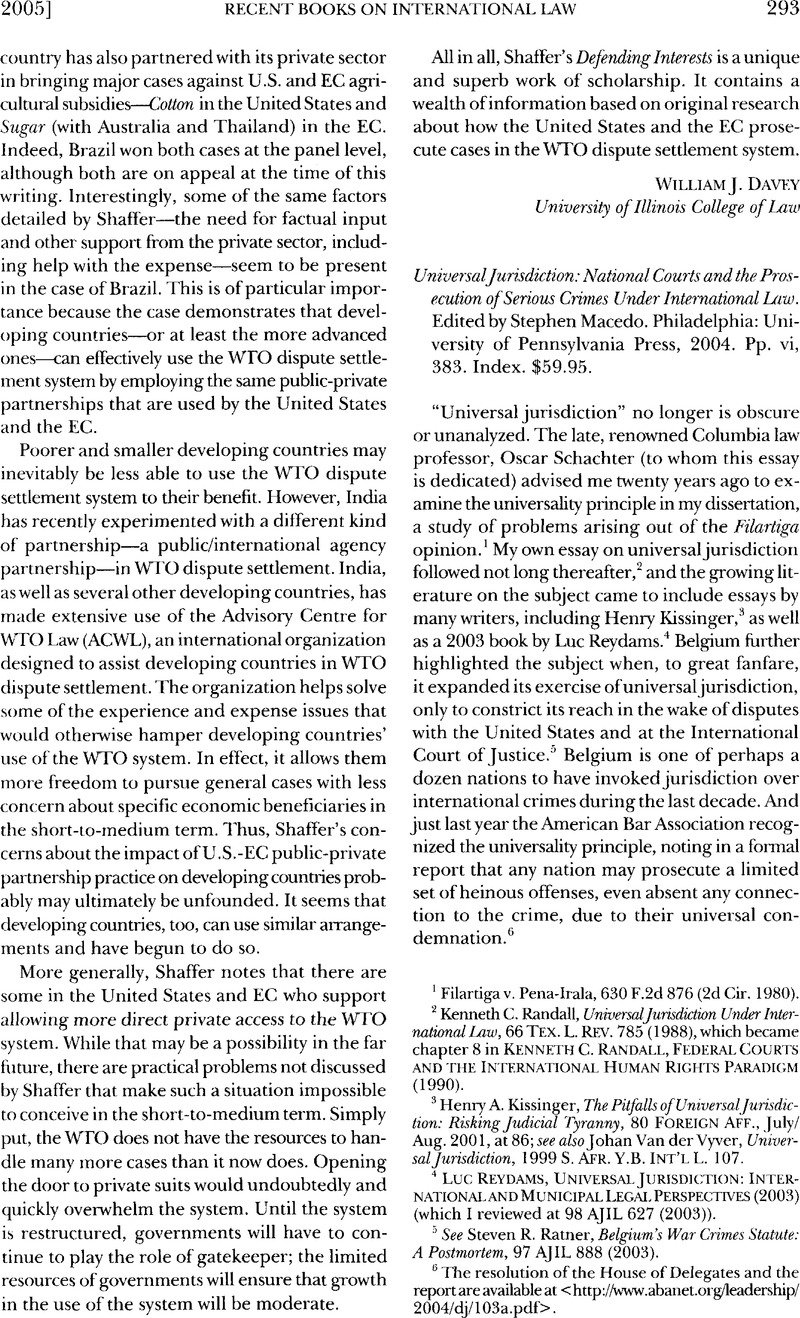Published online by Cambridge University Press: 27 February 2017

1 Filartiga v. Pena-Irala, 630 F.2d 876 (2d Cir. 1980).
2 Kenneth, C. Randall, Universal Jurisdiction Under International Law, 66 Tex. L. Rev. 785(1988)Google Scholar, which became chapter 8 in Kenneth, C. Randall, Federal Courts and the International Human Rights Paradigm (1990)Google Scholar.
3 Henry, A. Kissinger, The Pitfalls of Universal Jurisdiction: Risking Judicial Tyranny, 80 Foreign Aff., July/ Aug. 2001, at 86 Google Scholar, see also Van der Vyver, Johan , Universal Jurisdiction, 1999 S. Afr. Y.B. Int’l L. 107 Google Scholar.
4 Reydams, Luc, Universal Jurisdiction: International and Municipal Legal Perspectives (2003) (which I reviewed at 98 AJIL 627 (2003))Google Scholar.
5 See Steven, R. Ratner, Belgium’s War Crimes Statute: A Postmortem, 97 AJIL 888 (2003)Google Scholar.
6 The resolution of the House of Delegates and the report are available at <http://www.abanet.org/leadership/2004/dj/103a.pdf>.
7 The Principles, along with the associated commentaries, are available at <http://www.princeton.edu/~lapa/>.
8 See RANDALL, supra note 2, ch. 5.
9 124 S. Ct. 2739 (2004); see Brad, R. Roth, Case Report: Sosa v. Alvarez-Machain; United States v. Alvarez- Machain, 98 AJIL 798 (2004)Google Scholar.
10 28U.S.C. §1350(2000).
11 For those cases in which national and international law limits criminal prosecutions, Sadat discusses the use of alternative mechanisms to mete out justice, including truth commissions, lustration law, and reparations.
12 Ratner, supra note 5, at 888.
13 Id. at 889.
14 The collection’s readers might benefit even more so if the essays had included greater references to the Princeton Principles. The forewords and afterwords, however—by Macedo, Mary Robinson (former UN high commissioner for human rights), and Lloyd Axworthy (former Canadian minister of foreign affairs—offer helpful assistance in integrating the essays and tying them to the Princeton Principles.